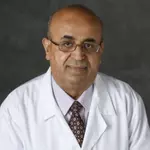Pediatric Epilepsy
Pediatric epilepsy affects nearly one percent of children in the United States and results in unprovoked seizures that can be dangerous when a child is unattended or falls down due to the loss of muscle control. There are many epilepsy syndromes that are recognized according to their unique signs and symptoms, including Doose syndrome, juvenile myoclonic epilepsy, Rasmussen’s syndrome and Sturge-Weber syndrome. The most common treatments for epilepsy are medication and dietary therapy. If the side effects are still present with diet modifications and medication, then surgery may be the best form of treatment. Common epilepsy surgeries include focal resection, corpus callosotomy, hemispherectomy and vagal nerve stimulation. An epilepsy specialist will decide what form of treatment will yield the best results based on diagnostic test results, and by tracking changes in the child’s condition.
-

Julia Henry, MD
Pediatric Neurology, Neurology
AdventHealth Medical Group Accepts New PatientsProvider Networks -

Majed Dasouki, MD
Genetics, Pediatric Genetics
AdventHealth Medical Group Accepts New PatientsProvider Networks -
Chelsie Smyth, PsyD
Neuropsychology
AdventHealth Medical Group Accepts New PatientsProvider Networks -

Nitzmari Melendez Vazquez, MD
Neurology, Pediatric Neurology, Pediatrics
-
James Edmund Baumgartner, MD
Neurosurgery, Pediatric Neurosurgery







